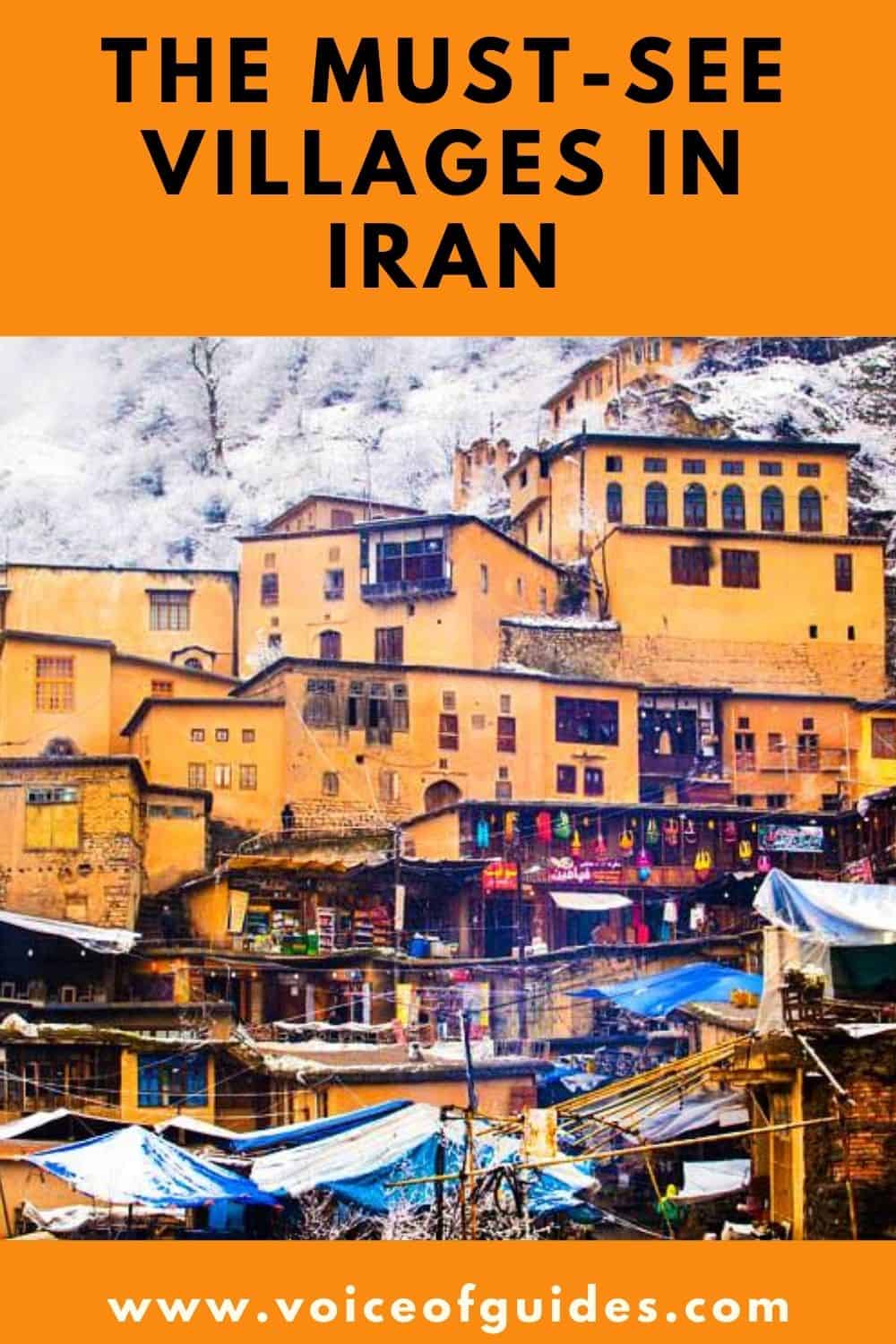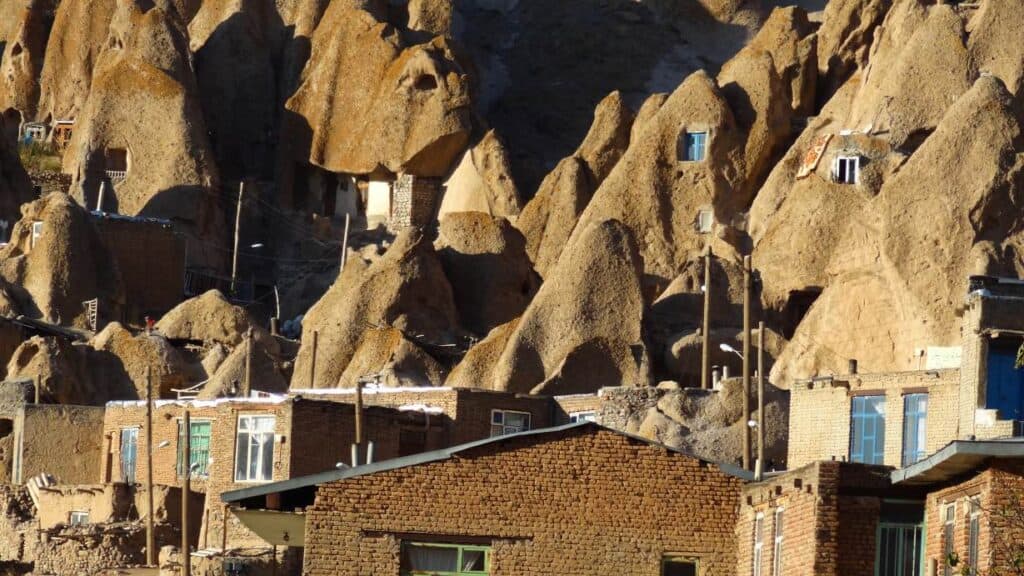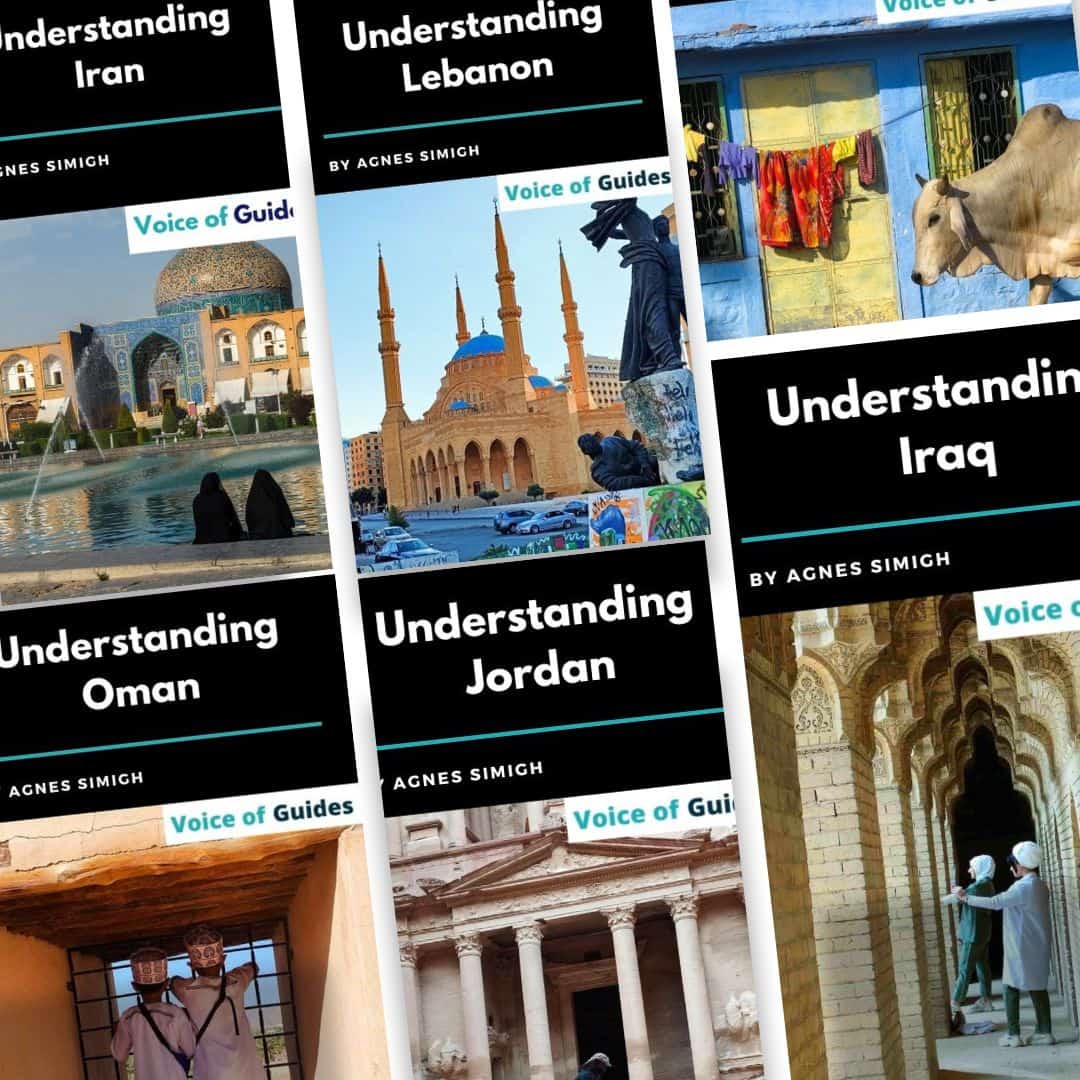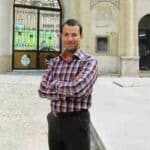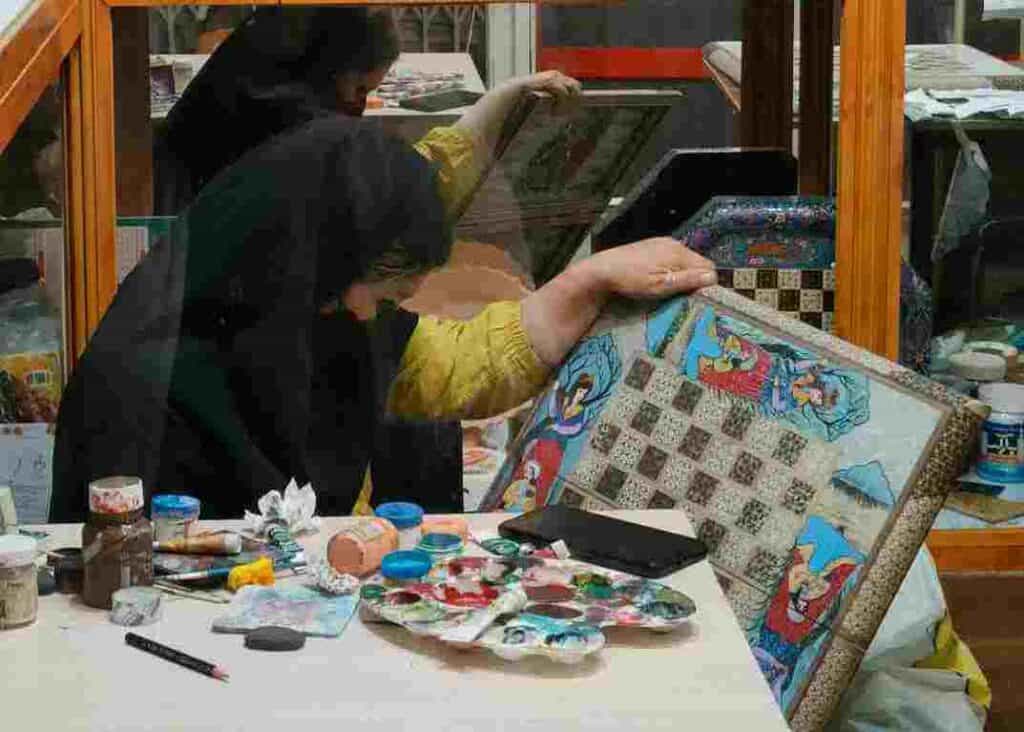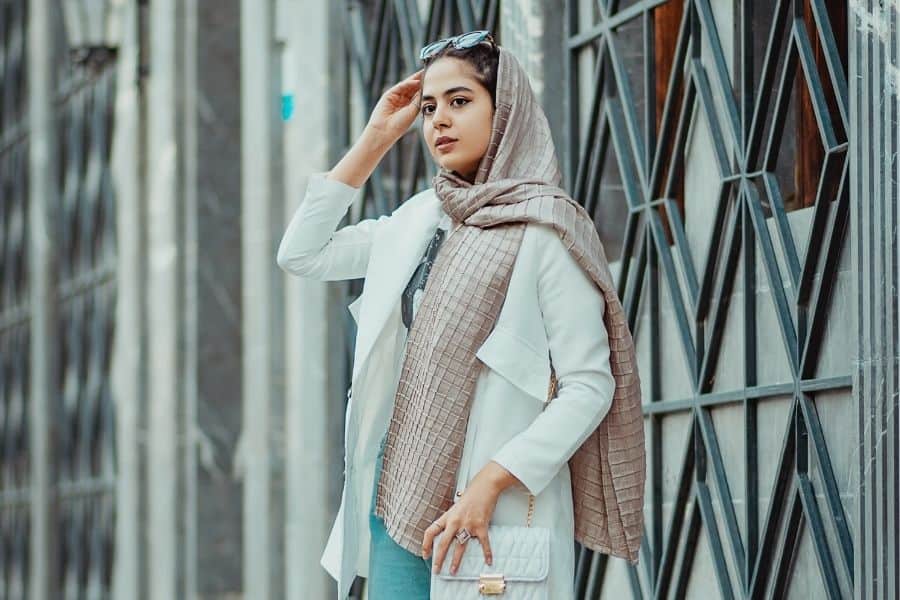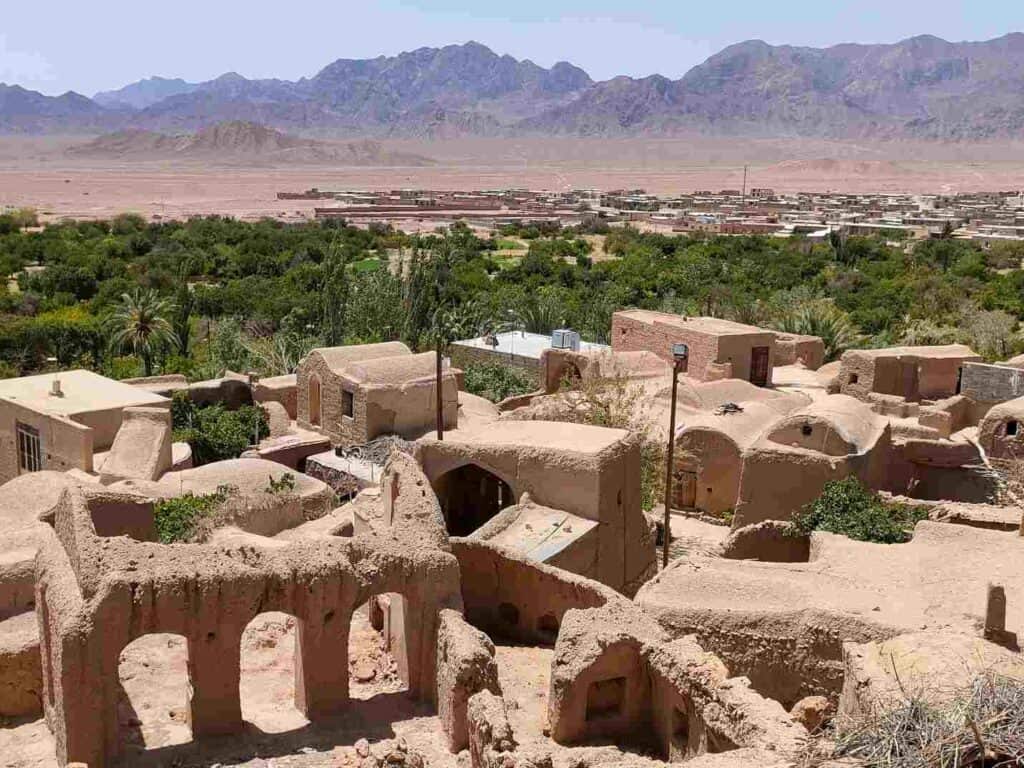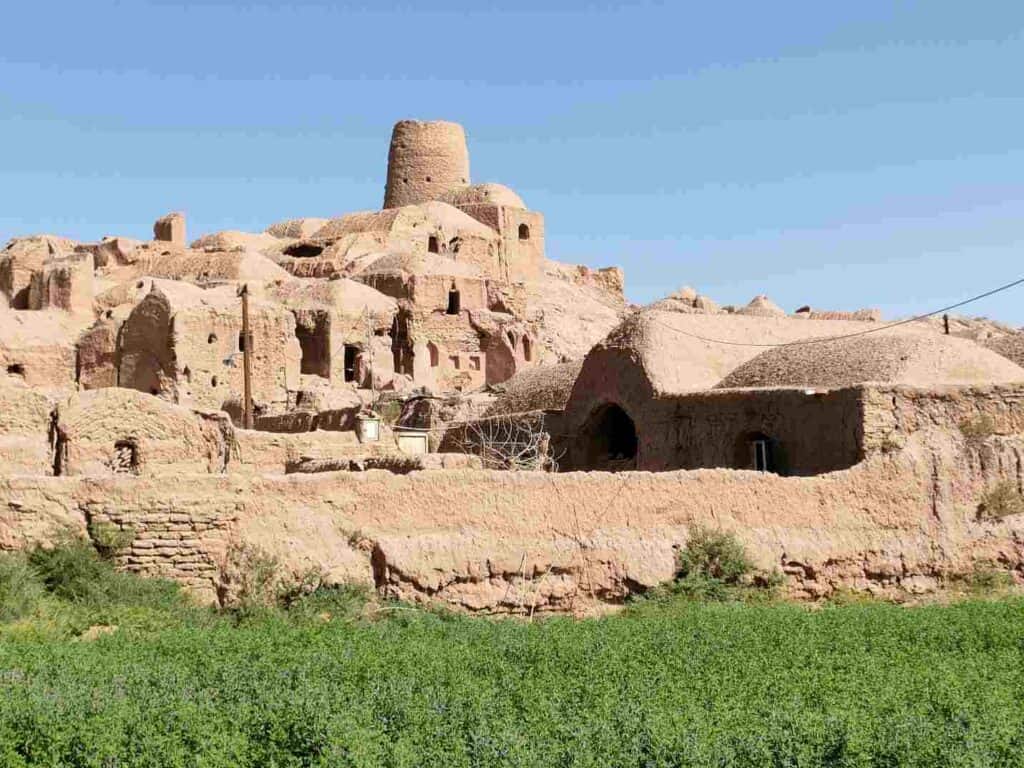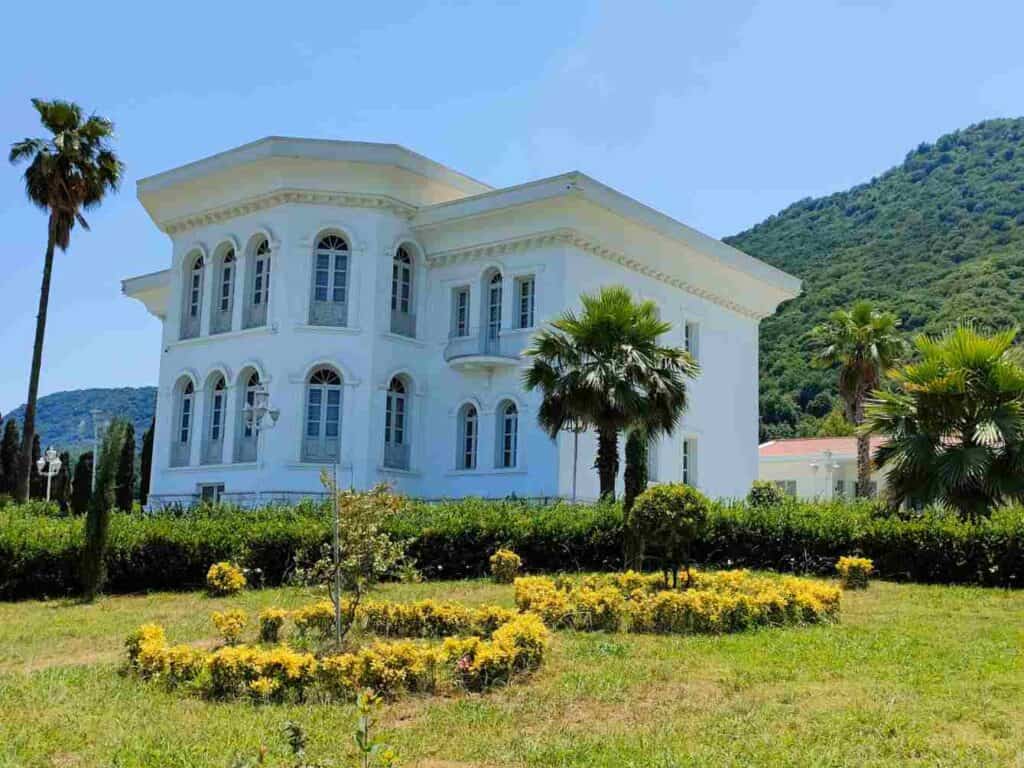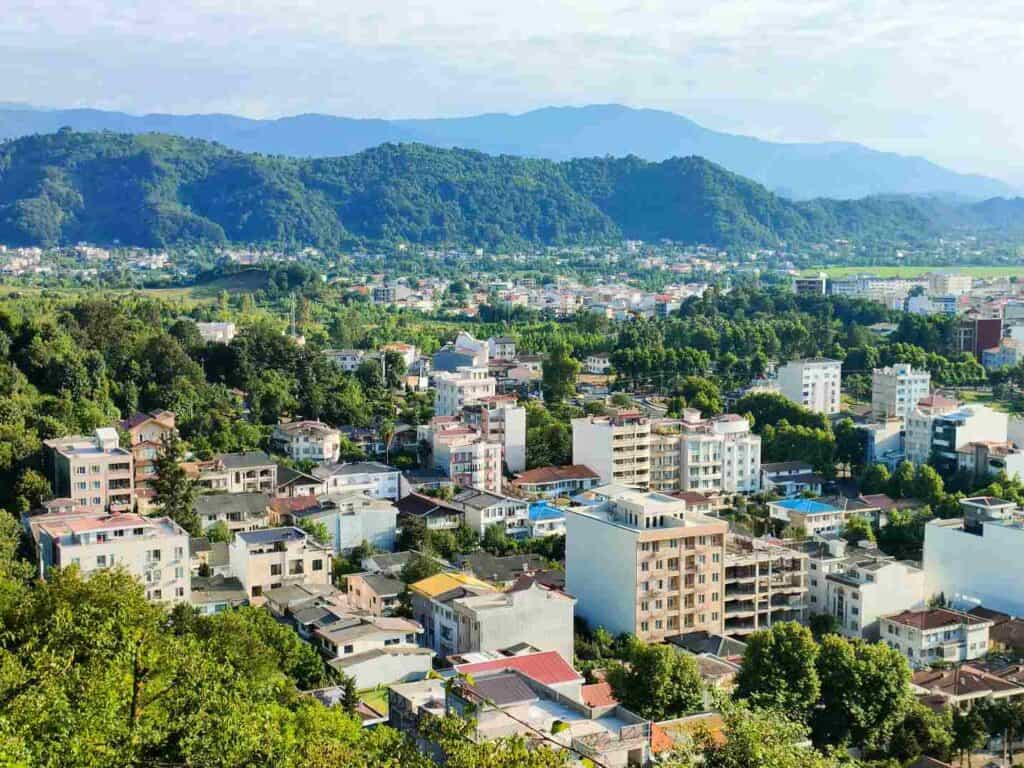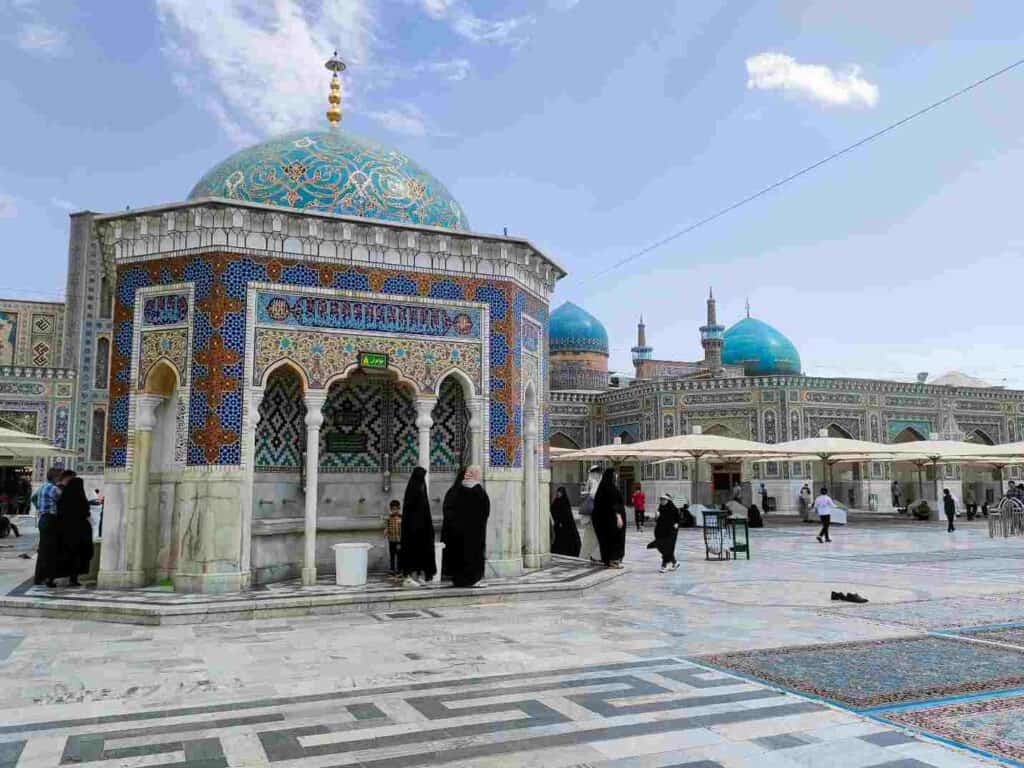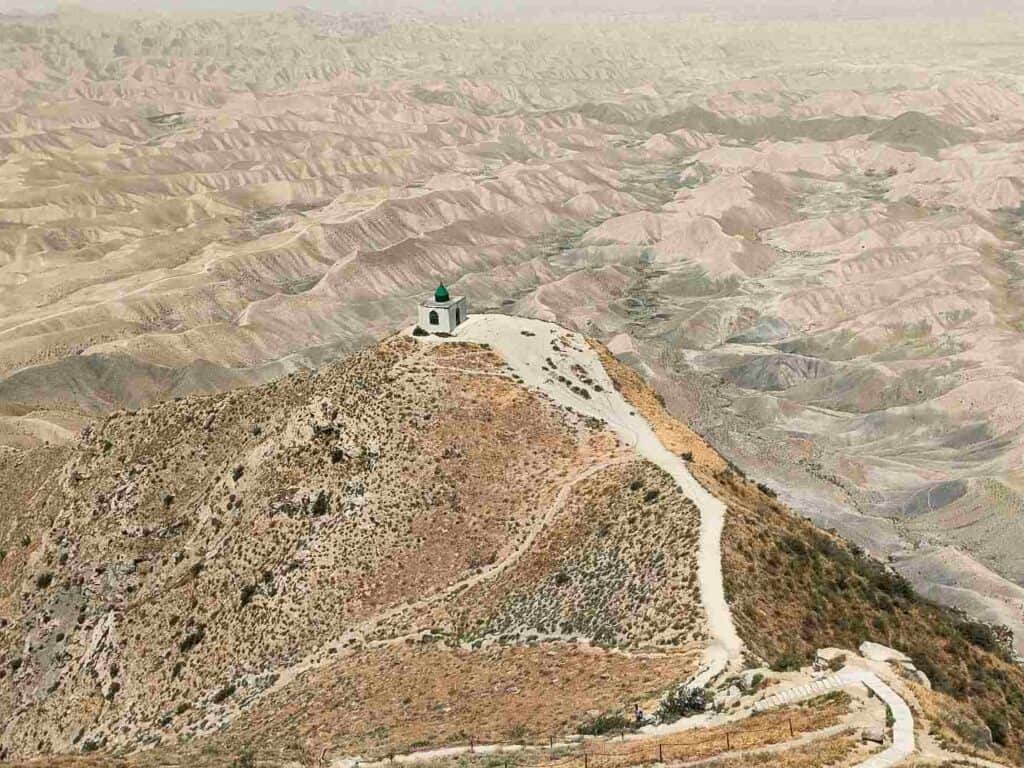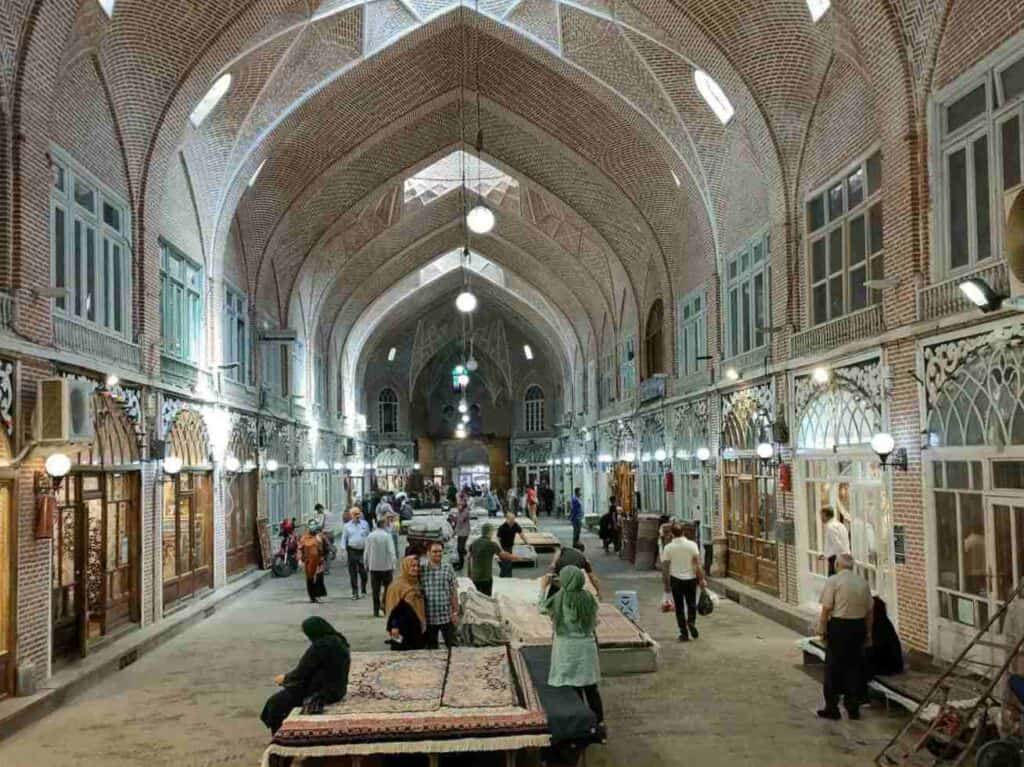This article may contain affiliate / compensated links. For full information, please see our disclaimer here.
Apart from the big cities, Iran has plenty of unique villages that are worth a visit. Depending on your itinerary, try to include some of them. Iranians also love getting out of the big cities and enjoy the calmness and uniqueness of these places. Here you find a summary of the most famous villages in Iran.
At the time of writing, 1 USD~ 240,000 IRR, the travel costs show pre-pandemic prices, as both the exchange rate and prices fluctuate recently, and it is impossible to give more up-to-date information. Read more about the Iranian Rial here.
The best two-week itinerary when you are the first time in Iran
- Masouleh – the stepped village in Gilan
- Olesbelangah village
- Palangan – the stepped village in Iranian Kurdistan
- Abyaneh – the "red village"
- Maymand, where people still live as cave-dwellers
- Makhunik village (Iran’s Lilliput village)
- Tamin village
- Kandovan – The Cappadocia of Iran
- How to plan your trip to Iran
Masouleh – the stepped village in Gilan
Passing by terraced rice fields and forests, you reach the stepped village of Masouleh, at 1000 meters above sea level, in the Gilan province of northern Iran. It is a village only in its style. But it has already been classified as a city because of its large-scale tourism developments. Masouleh is not the only one but one of the most beautiful stepped villages in Iran. It means that it was built against the slope of the mountain on a natural rock base. There are 120 meters between the highest and lowest part of the place. Even more surprising that no experienced architects but locals constructed it.
The roof of one house is the courtyard of another house. At the same time, it serves as a street or meeting place. The residents gave their permission that the roof can be both an alley and a public meeting spot. That means that when you walk the streets of Masouleh, you walk on top of another house. Narrow staircases and ramps connect each level. They built the houses so densely next to and above each other that there was no room left for wider roads, making Masouleh the only Iranian settlement with no cars or other vehicles, apart from wheelbarrows.
Most houses have two storeys. One or three-story homes are rare. In Masouleh, it is an old tradition to build houses out of stone, brick, wooden beams, and wild ferns. They plaster the walls annually with yellow mud, and the roofs with red clay collected from the river bank. Thus, they are well visible even in the thick fog that often covers the town.
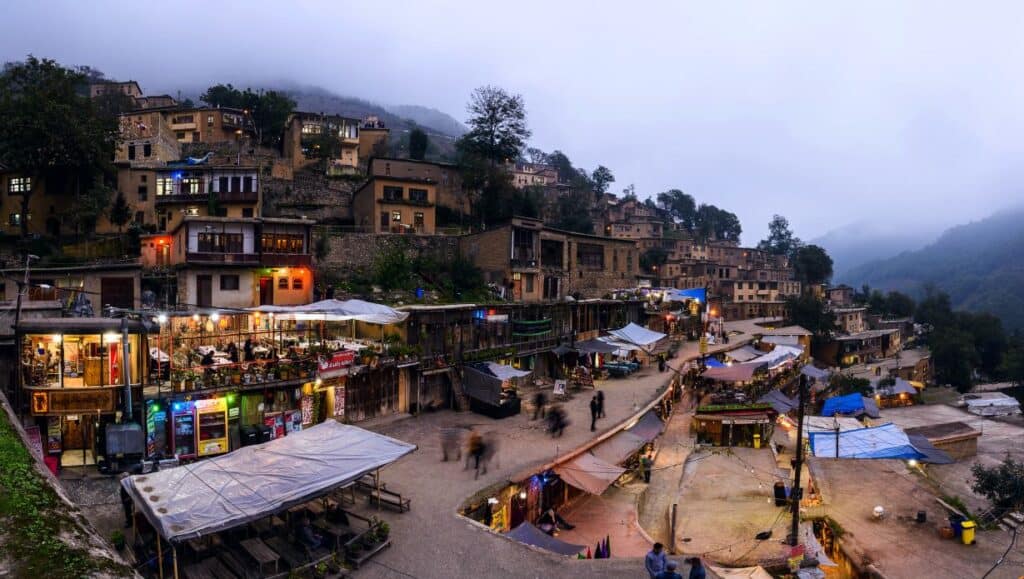
The center village is the four-level bazaar, where you can buy the famous Masouleh wool doll, colorful handmade stockings, and many other things. Most people live from tourism: they work as tour guides or offer accommodation and run a restaurant. The women make local handicrafts. People here speak the “Taleshi” language, which is barely understood by those who speak Persian.
The history of Masouleh starts with the old village about 6 km away, of which not much is left anymore. Yet, it was once a thriving commercial center thanks to its iron mine. Then an earthquake, epidemic, and other disasters led to the eventual construction of the new village. They did not only rebuild Masouleh on a steep hillside because it is good-looking but also for practical reasons. The stepped style protects it from floods, and in the cold winter, it catches the sun rays on a larger surface.
Do not forget to taste the best-known specialty of Masouleh, the “mirza ghasemi,” a blend of eggplant, tomato, garlic, and eggs!
On weekends, when picnic-loving Iranians arrive in crowds, the smell of grilled meat and hookah spreads over the village.
The best two-week itinerary when you are the first time in Iran
How to go from Tehran to Masouleh?
There is no direct bus from Tehran to Masouleh.
– First, take a bus from Tehran to Rasht. (ticket price starts at 5,550,000 IRR). Buses to Rasht leave from the Beyhaqi Terminal and West Bus terminal. There is a train connection between Tehran and Rasht, but it is not frequent (~1,019,000 IRR).
– Take a shared taxi from Rasht to Fooman city, and from there to Masouleh.
– You can also take a direct taxi from Rasht to Masouleh ( ~ 600,000 IRR)
Olesbelangah village
Olesbelangah village is located in Gilan province, famous for its greenery at the foot of the Alborz Mountains at 1489 meters altitude.
Iranians like escaping the cities to breathe the fresh mountain air in Olesbalangh. They prefer going there in spring and summer when it gets cold and foggy but gives a unique look to the forest area.
To visit this charming village is one of the best things you can do when you are in Gilan province. You can stay in one of the beautiful wooden cottages.
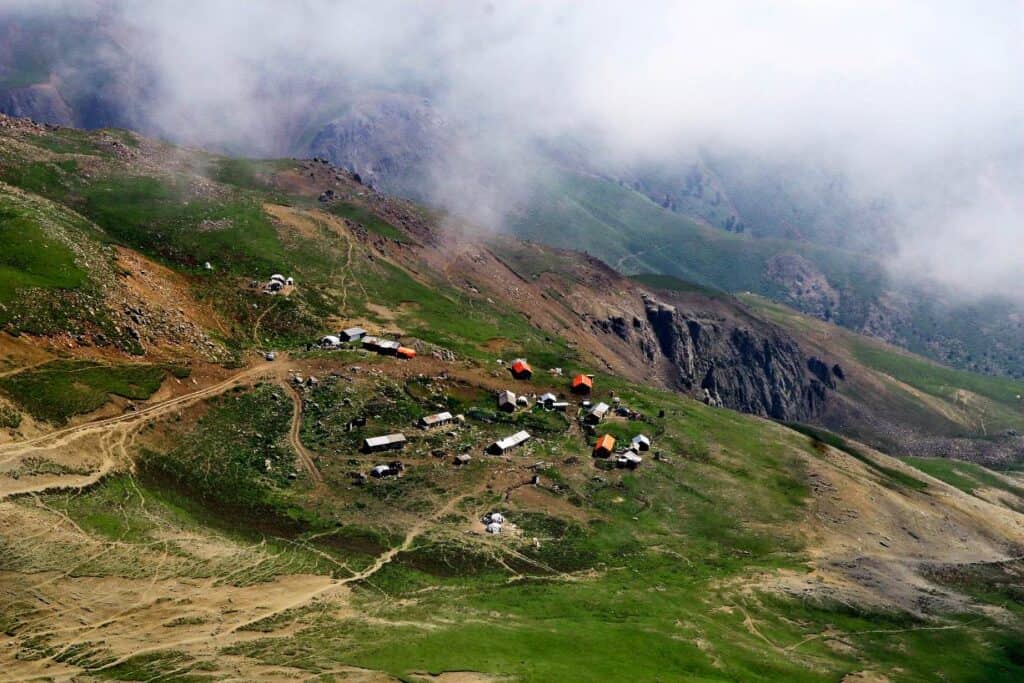
How to go to Olesbelangah village?
– The easiest way is to get a taxi from Rasht, or the best thing is to rent an off-road vehicle. (~8,000,000 IRR/day)
Palangan – the stepped village in Iranian Kurdistan
Palangan was built on both sides of the Tangi Var River that stretches deep in a valley. It clings to the mountainside, like the town of Masuleh. It has only 1,000 inhabitants and is much more untouched than the tourist-frequented Masuleh. The Iranian Kurds living here still wear traditional Kurdish attire on Fridays and rest at home after the Friday prayer. Horseback riding, tug-of-war competitions and folk dances belong to their favorite pastime. Palangan, far from the big cities, nurtures the visitor’s soul with its beautiful natural surroundings, local Kurdish hospitality and simplicity. Kurdish shepherds lead their flocks daily through the stone bridges that connect the two sides of the river. Waterfalls and springs are a short walk.
Given that most of the inhabitants make their living from fishing, fish kebab is a specialty you do not want to miss in Palangan.
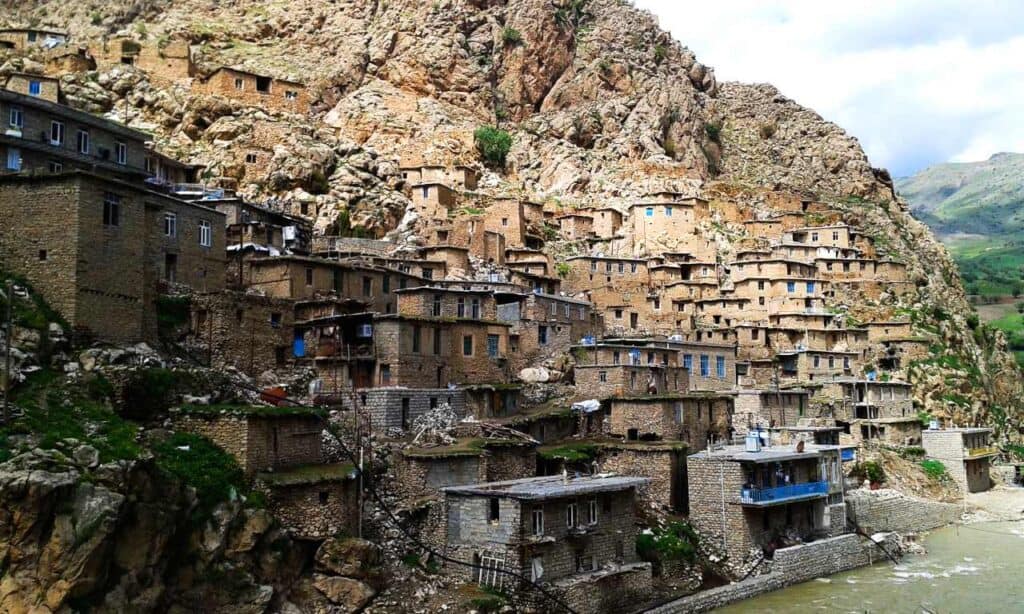
Not far from the village, you find the ruins of the Palangan Castle. Ancient Jewish graves are reminiscent of the Jews who once found refuge in the castle during Great Cyrus. To this day, this part of the village is called the Jewish or Moses neighborhood. Zoroastrians and later Muslims occupied it in the 7th century.
Palangan is famous throughout Iran for its spectacular Nowruz (Persian New Year) celebration. The whole village gathers at the river bank. For the first gunshot, the villagers lit the bonfires, for which they collect firewood days earlier. Upon the second gunshot, women and men light the torches in their hands. For the third one, they climb the steep streets of the village. Some give speeches, and then women in colorful dresses and men wearing baggy pants celebrate with Kurdish songs and dances. The fire was a symbol of purity and goodness in the pre-Islamic Zoroastrian religion. The Nowruz ceremony itself has survived from this time. Lighting a bonfire is meant to symbolically get rid of demons.
How to go from Tehran to Palangan?
– Buses from Tehran to Kamyaran, Kermanshah and Sanandaj depart from the West Bus terminal
– You can get to Palangan by private or shared taxi from Sanandaj, Kamyaran, or Kermanshah. You have to negotiate the price. Since Kamyaran is the closest to Palangan, this will be the cheapest (~400,000 IRR).
Abyaneh – the “red village”
Abyaneh, called “red village” after the color of the mud-brick houses, is one of the most famous villages in Iran. The village has a similar structure to Masouleh and Palangan but does not cling so steeply to the mountain, and it has wider roads as well. The region around Abyaneh features plenty of apricots, pear and apple trees, from which locals make dried fruit and jam specialties.
The best two-week itinerary when you are the first time in Iran
Abyaneh is unique because locals still speak a Middle Persian language that even other Iranians do not understand. People living here often come and go in traditional folk costumes. Women cover their heads and shoulders with a long white scarf with a colorful pattern, wear colored skirts, and men wear loose brown or black trousers. Young people working in cities also wear national costumes when they return home.
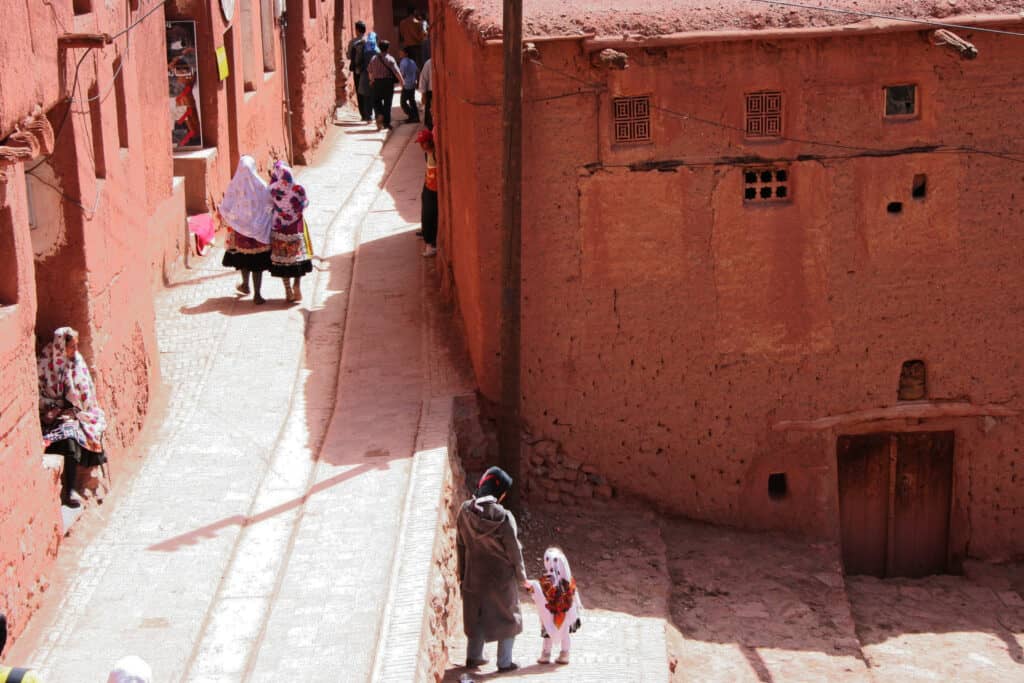
Tip: Dress up in local folk costume, hire a local tour guide to tell the story of each house, knockers, memorials and shrines. Be prepared that Abyaneh is one of the most visited tourist destinations in Iran, especially during Nowruz.
How to go from Tehran to Abyaneh?
– Buses depart from the West, the South and Bayhaqi Bus Terminal to Kashan
– You can take a taxi from Kashan (~1,000,000 IRR) or Natanz (~500,000 IRR) to Abyaneh. Prices are not fixed, you have to negotiate it with the driver.
The complete travel guide to Kashan
Check the price and book your trip to Abyaneh
Maymand, where people still live as cave-dwellers
Maymand is probably the oldest village in Iran with a history of at least 10,000 years. Here some people still live as cave-dwellers while pursuing a semi-nomadic lifestyle. You can get an idea of the simple ancient primitive way of living by having lunch in the cave restaurant.
The unique village lies in the Kerman province in Southeastern Iran, 20 km from Shahr-e Babak. Located along the Tehran-Bandar Abbas transit road, also called the Golden Road of Iran, it has a central economic and political position. It has good connections with Shiraz and Isfahan as well.
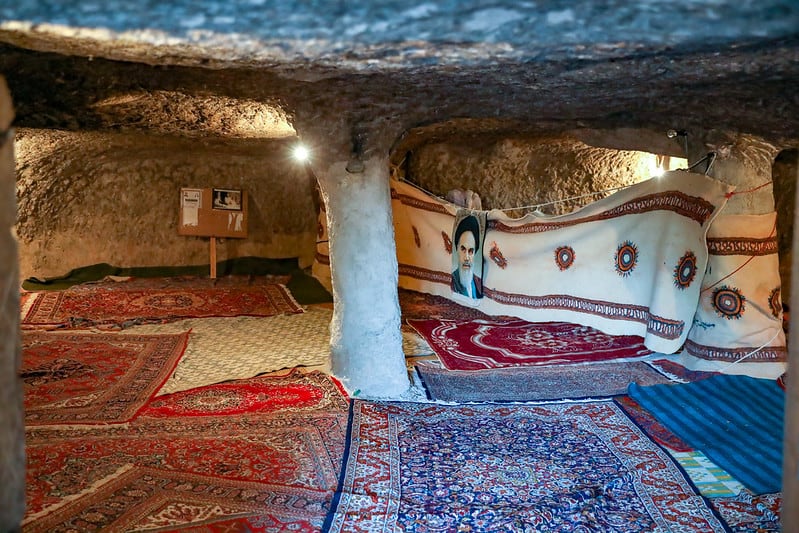
The road from Shahr-e Babak leads up to the mountains. There you can observe the man-dug architecture in the semi-desert area. Maymand has extreme weather conditions with harsh winters and extreme heat in summers. Locals have easy access to the expansive pomegranate and pistachio orchards, mulberry and blackberry trees in sharp contrast with the arid landscape.
Maymand’s name derives from May, meaning „wine” and Mand, meaning „drunk”. They say that the village’s men had drunk wine before constructing it. It may be true as it dates back to the pre-Islam era.
Around 160 people still live in the village and keep their unique customs. They use Sassanidan words from the pre-Islamic times and the majority pursues a semi-nomadic lifestyle. They raise their animals on mountain pastures and live in temporary settlements during spring and autumn. In summer and winter, they occupy the caves and work on farms.
Nowadays, almost exclusively older people live here because young people try to get work in nearby Shahr-e Babak (the Land of Copper).
What is fascinating about Maymand is that the dwellers did not build the 350 hand-dug houses by laying pieces of stones and brick upon each other. They did not use hammer and chisel either. Instead, they carved out the cave with a hard, sharpened stone found in the area and removed a bunch of soil. The cave dwellings are stacked atop one another, sometimes up to four and five levels.
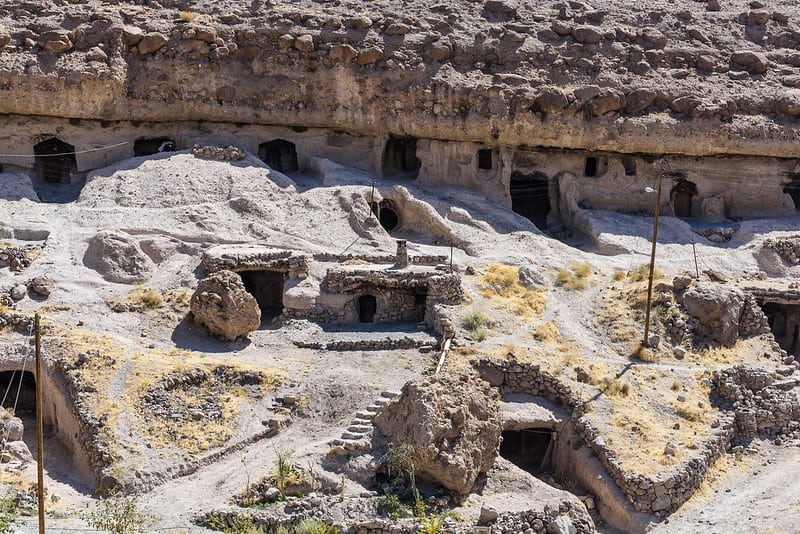
A 10,000 years old inscription and 6,000-year-old pottery give an idea bout how ancient this settlement is. The cave structure most probably served religious purposes but later became a permanent home for the settlers.
The dwellings („Kicheh” in Meymand dialect) consist of several rooms and stables. The internal spaces have corridors and pillars. The houses are only 16-20m², have no windows or chimneys, and the rooms are 2 meters high on average. A stove stands in the center of every house used for cooking and for heating in cold winter times. But the caves are now equipped with electricity. Air conditioning is not necessary as the caves are naturally cool.
There is even a village mosque. Two brothers built it by knocking down the wall that had separated their houses. You can have a rest in the café-restaurant with stone and wooden tables and chairs, and traditional ovens.
Check the price and book your trip to Maymand
Other attractions around Maymand
The Ayoub cave, close to Shahr-e Babak is one of the largest caves in Iran. Locals believe that Ayoub (Job), the messenger lived in this cave in the past, and he left his footprint behind.
Many tourists come in May to admire the Rhubarb plain (Dasht-e Rivas) some 20 km from Shahr-e Rabak. The red Rhubarb flowers envelop the meadow of 2,400 hectares.
How to go to Maymand?
- First, you need to go to Kerman. From the major cities, you can get to Maymand by bus, train or flight.
- From Kerman take a shared taxi to Rafsanjan or Shahr-e Babak
- Another option is to take a direct bus from Tehran (South Terminal) or Yazd to Rafsanjan.
- Take a taxi to Maymand from Shahr-e Babak (~800,000 IRR) or Rafsanjan (~120,000 IRR).
- If you come from the South, there is a direct bus from Bandar Abbas to Shahr-e Babak
Makhunik village (Iran’s Lilliput village)
This village is well-known to be one of the seven weirdest villages in the world. Makhunik lies in South Khorasan Province, only a half-an-hour drive from Afghanistan. Its inhabitants are Afghans, who migrated to Iran several centuries ago. It got its name, Lilliput village, after the tiny houses where the exceptionally small, hardly taller than one-meter residents lived. Everything is minuscule in the Lilliput village: the walls, the doors, the shelves and the windows. You cannot even enter the home without bending your head. The houses are usually not rectangular and were built very close to each other on the hill slope to blend into the surroundings and escape from invaders.
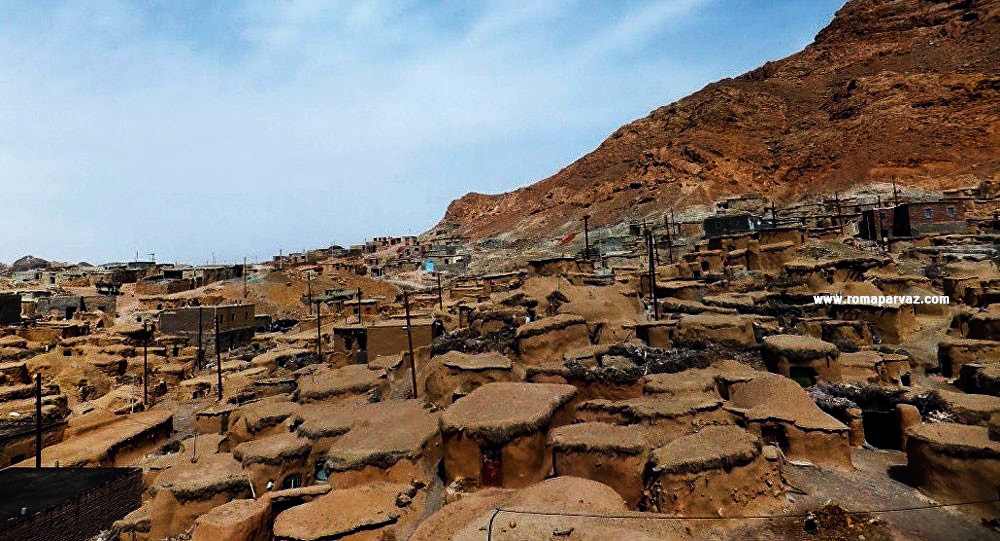
The other reason to build miniature houses was practical. They had to carry building materials from kilometers’ distance. Small houses were faster to construct and easier to keep warm and cold in extreme temperatures.
But why were the people in Makhunik village a lot shorter than everybody else?
They explain that with more factors. Malnutrition and the mercury content of their drinking water probably had an impact on the height of people. The area is dry, harsh, and not favorable for agriculture. Under these circumstances, all they could grow were a few vegetables, corns and fruits at all. In this isolated village, intermarriage was a necessity. But it caused defective genes, which probably led to dwarfism.
The village is also unique for its long traditions. The residents follow ancient customary law that gives solutions for land disputes, animal husbandry and family issues.
In the last century, thanks to the general improvement of living standards, the residents have become of average height. When roads were constructed, they could get nutritious food, like rice and chicken as well. But as a reminder of the past, out of 200 homes, many of them as low as 1.5-2 meter.
How to go to Makhunik village?
Unfortunately, Makhunik is far from all the tourist places and is difficult to access.
– The best way is to travel to Mashhad first. There are several buses, trains and flights from the big cities to Mashhad.
– From Mashhad to Birjand
– From Birjand to Makhunik
Otherwise, there is a direct bus from Tehran South Terminal to Birjand, but that route is very long and boring (~ min 1,760,000 IRR). You can also go from Yazd to Birjand (~900,000 IRR)
Tamin village
The village lies in Sistan and Baluchistan province. The Haftad Molla Ancient Cemetery or Seventy Mullahs, located on the sandstone rocks of the Taftan volcanic mountain is the main highlight. Inside a big hole, several rectangular graves were formed next to each other. Some say that when Islam arrived, the Zoroastrian priests sought refuge and died here. According to another version, the graves are in such height to avoid floods.
How to plan your trip to Iran
Book your flight to Iran: I always use Google Flights, Skyscanner or Wayaway to find the cheapest flight tickets worldwide. To get an extra 10% for your Wayaway Membership Plus program use my discount code VOG
Important: Booking.com and other common platforms do not work due to international restrictions in Iran. The only exemption is Skyscanner, where you can book both your international flight and accommodation in Iran!
Book your accommodation in Iran: Hostelworld.com offers a limited number of hostels. All other services are only available through local travel agencies, like 1st Quest.
Get your visa to Iran: 1st Quest or Tap Persia local companies can easily arrange your insurance for Iran
Book domestic flights, hotels, transfers, bus and train tickets, and local tours, all in one place via 1st Quest travel agency.
Another good thing is that by using my discount code, you get an extra 5% off your bookings: VOG%1stQ
Virtual Private Network (VPN): Use VPNExpress, the fastest and best Virtual Private Network to get access to blocked sites in Iran and to prevent hackers from stealing your private information.
Insurance to Iran: 1st Quest or Tap Persia local companies can arrange for you visa to Iran
Book local guides and local tours: Pirsik is specialized in offering tour guides and local tours in less touristic countries, including Iran.
How to go to Tamin village?
You have to go from Zahedan to Mirjaveh and then, Tamin village. There is an easy, asphalted road to Tamin village. But take local transport to get to the cemetery.
Important: Do not travel to Sistan and Baluchistan province alone, but go on a tour instead. It is near the border with Pakistan with high crime rates. Guides often need to coordinate with the police and security forces during the trip. They are always careful when the tour continues from Kerman toward Sistan and Baluchistan and the Pakistan border along the drug transfer highway.
Kandovan – The Cappadocia of Iran
Kandovan is one of the most famous villages of Iran that looks like something from a fairy tale. It lies 50 km south of Tabriz in East Azerbaijan at the foot of Mount Sahand (3707m) near the city, Osku. The volcanic ashes of Mount Sahand hardened and formed unique forms of tuffs in the region. It is now an inactive volcano with a crater on the top. Usually, after the eruption, the volcanic ashes and debris cover the surface, but in Kandovan, cone-shaped rocks appeared instead. The reason is still unclear. The higher levels probably cooled down faster. It made this softer than the base and thus more exposed to erosion. The solid volcanic tuff is hard enough to serve as walls and floors but soft enough to be shaped by human power.
The houses of Kandovan, called “Karans” are of 2-3-4 storeys with an animal shelter, kitchen and living quarters interconnected by narrow corridors. Some caves were formed by erosion, but locals carved out most of them.
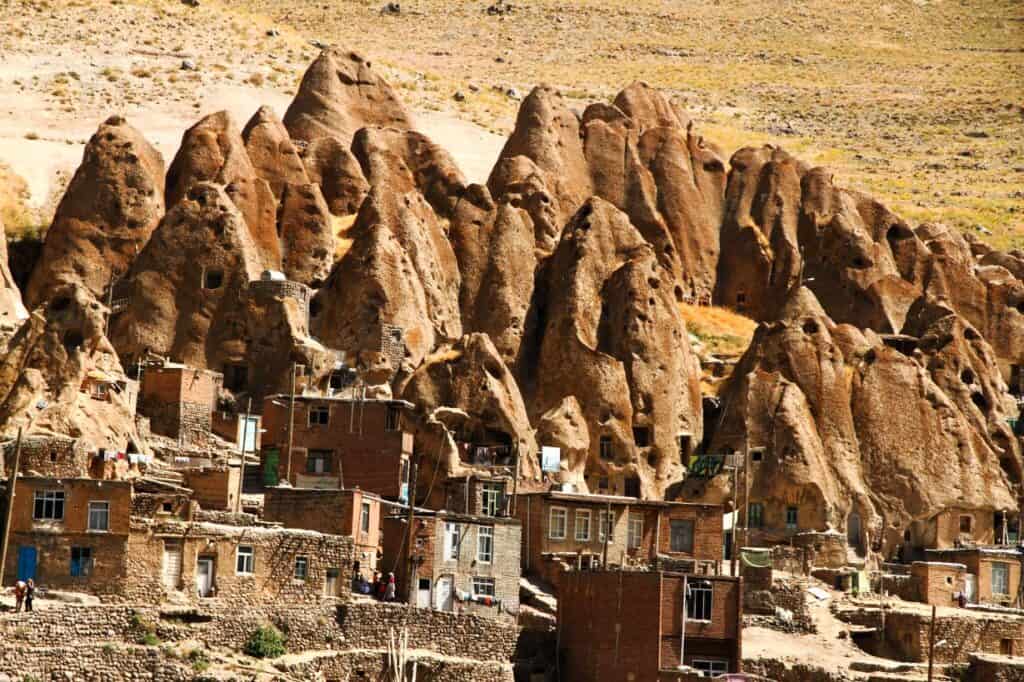
The village does not lack any basic facilities. It has a mosque, a public bath, a school and a mill. Kandovan also has a natural spring that they traditionally use for healing kidney problems.
The caves are ideal during the hot summer and cold winter as they provide a pleasant temperature.
Kandovan has approximately 600 inhabitants. The first dwellers found refuge in the caves when they fled the Mongol occupation 700 years ago. Many of them stayed and extended their caves into permanent homes and adding multiple storeys to that. Others say that a group of soldiers was hiding in the caves during a military campaign.
The villagers speak the Azeri language, but the people have traditional Iranian names.
How to go from Tehran to Kandovan?
– There are many daily buses, trains and flights from Tehran to Tabriz. Buses depart from West and Beyhaqi Bus Terminal (~1,000,000 IRR)
– You can get a taxi from Tabriz to Kandovan (~1,000,000 IRR)
Have you been to any of the villages? Leave a comment about your experience.
Pin it for later!
